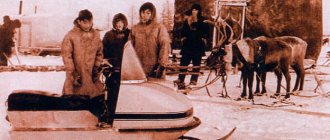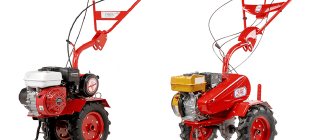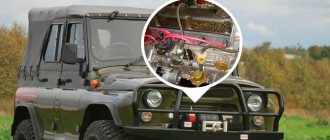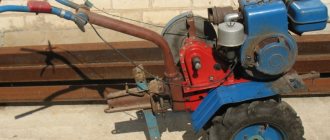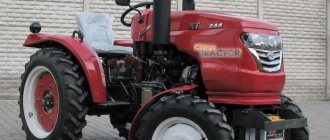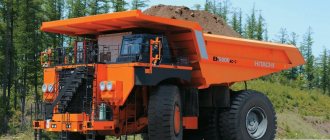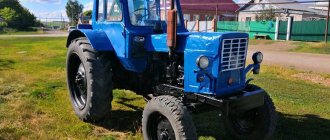Content
- Can Qashqai and Atlas be compared?
- "Gili Atlas" and "Nissan Qashqai" in terms of driving
- How reliable are cars?
- How to choose the right aftermarket cars
- What to choose: Gili Atlas or Nissan Qashqai
At one time, the Qashqai virtually invented the mid-size crossover genre and sat at the top for a long time. But, as often happens, while you rest on your laurels, competitors are getting closer. Sometimes even the most unexpected competitors.
Can Qashqai and Atlas be compared?
Now yes. Just two or three years ago, Chinese cars were a disgrace, it was a shame to put them on the same level even with the “Koreans”. Times have changed, and the Geely Atlas today is quite an alternative to the Qashqai both in terms of performance and driving characteristics.
In general, if you cover the nameplate with your hand, then we see a well-built SUV with a full-fledged five-seater interior, high-quality finishing of materials of different textures, advanced equipment such as a virtual instrument panel, a rear view camera and climate control. The only evidence of its Chinese origin is the characteristic unpleasant smell of plastic - the family curse of all cars from the Middle Kingdom.
But they managed to get rid of another curse - crooked landing geometry. Chinese cars of the past were famous for the fact that either dwarfs or gnomes could sit behind the wheel: there was so little space there, and the driver’s posture as a whole was so unnatural. Now neither the pilot nor the passengers have any problems with this: the cabin is normally laid out and surprisingly ergonomic. There's even enough room for three people in the back: no protruding tunnels in the center, it's just some kind of miracle.
And most importantly, the Geely Atlas is quite cultured and neatly made - with attention to detail: pads on the backs of the front seats, an impressive underground space in the trunk, grab handles for the front passenger if it suddenly gets shaken off-road. The creators of Atlas even foresaw this, so it’s not a shame to place the car among its more famous competitors.
And in general, the day is not far off when it will be a sin to keep more famous competitors on the same level as Geely. The same Qashqai, for example. It is already clear that Nissan has stayed too long on its throne and has treated the second generation somewhat carelessly. Technical differences from its predecessor are minimal: we see, plus or minus, the same naturally aspirated engines with the same CVT from Jatco, neither the suspension settings nor the cross-country ability have fundamentally changed - the clutch with the CVT still overheats with the slightest slip.
In terms of passenger comfort, the Qashqai II is not far behind its predecessor. The salon (with a protruding tunnel!) is conventionally five-seater; media system from 2008; the finishing is inexpressive (although of high quality, not poor). Compared to the Geely Atlas, today the relatively new Qashqai looks like a car of the previous generation. There are already panels, touchscreens and automation everywhere, but at Nissan everything is still lamp-based.
Also read: Nissan Qashqai II vs Hyundai Tucson III: is it worth overpaying
The lineup
The Nissan Atlas model range can be called very diverse. It implies two separate categories, differing in the load capacity of the trucks produced (light and medium load capacity). The first ones are marked “F”, the second ones – “H”. Each category is represented by several generations, improvements of which are still taking place today. The predecessors of light-duty trucks are the even lighter Princ Homer and Nissan Cabstar (Nissan Atlas is still called that in Europe). The predecessors of the H series are the large and heavy Nissan Caball and Nissan Clipper.
Nissan Atlas has several types of models
In addition, there are many modifications of the Nissan Atlas as special equipment - vans, refrigerators, dump trucks, flatbed vehicles and vehicles converted into fire trucks and tow trucks. In India, this truck is even rated as a military truck, which is why it is also called the Ashok Leyland Garuda.
Low load capacity
Light duty Atlas ("F") have been produced since 1982. The cargo they are capable of transporting is 1-1.5 tons. This cargo category belongs to the following representatives of different generations.
Be sure to read: Technical characteristics of ZIL MMZ-554
F22 (1st generation) . The most famous model, most often called the Nissan Atlas 150. Common modifications:
- van;
- multi-stop truck - a small-tonnage vehicle used for local transportation;
- flatbed cars;
- fire truck (F100).
During production (from 1982 to 1992), both gasoline (Z16, Z20, NA16, NA 20) and diesel engines (SD25, SD23, DT23, DT27) were installed. The transmission is a manual transmission.
Atlas 150 was produced not only in Japan, but also in India. It is still very popular in the UK, where the first deliveries were sent, and in Africa.
F23 (II generation) or Nissan Atlas 10 was developed from 1992 to 2007. Unlike the previous generation, there are improvements:
- predominantly a 4-cylinder diesel engine began to be installed (DT23, DT25, DT27, KA20DE, NA20, the most powerful (3.2 l) of which is QD32);
- the transmission has been upgraded to a 4-speed automatic transmission;
- automatic windows appeared, the instrument panel was improved (previously there was no tachometer).
The exterior was changed, large windows were installed on the doors, opening up visibility. The maximum load capacity of the Nissan Atlas 10 is 1.3 tons.
F24 (III generation). The F24 marks the start of joint production of the truck with Renault due to differences in standards. In the basic, Japanese, configuration, the following improvements are noted:
- Both diesel (3 liters) and gasoline (2 liters) 4-cylinder engines are used;
- Automatic and manual transmission in 5 or 6 stages (depending on engine power);
- three categories of carrying capacity: 2, 1.75 and 1.5 tons;
- the body has been enlarged (3 or 6 seats).
One of the latest innovations is the release of the F24 with an electric motor. Most trucks have a lot of useful options (for example, installing video cameras around the vehicle, which allow the driver to comprehensively view the road situation).
Light-duty Nissan Atlas comes in 2- and 4-door versions, as can be seen in the photo. Depending on this - front-wheel drive and all-wheel drive.
Nissan Atlas is used in various fields of activity
Average load capacity
Nissan Atlas mid-duty trucks are designed for 2-4 ton loads. They are represented by the next generations.
Be sure to read: Technical characteristics of GAZ Yeger 33081
H40 (1st generation) is the very first representative of the Nissan Atlas (200/300), produced from 1981 to 1992. Equipped exclusively with gasoline engines (Z20 and NA20), all-wheel drive. Made in India.
H41 (II generation) has been significantly modified, which can be seen in the photo - a more streamlined body, a different grille, larger side windows. A diesel engine was installed (BD30, FD42, FD46). It was produced for only 4 years.
H42 (III generation) or Nissan Atlas 20/30 began to be produced with a payload capacity increased to 3 tons. In addition, a number of design changes took place:
- a front autonomous suspension was formed;
- engines began to be installed in accordance with European gas emission standards;
- the number of lighting fixtures in the cabin has been increased;
- capacity – 3, 6, 7 passengers, including the driver.
Production stopped in 2007.
H43 (IV generation) is a diesel truck that can carry up to 4.5 tons of cargo. The developers tried to “adjust” it to European safety standards, so the exterior has been changed. Equipped with a 5 and 6 speed manual transmission. Both front-wheel drive (2-door) and all-wheel drive (4-door) modifications are available.
H44 (Vth generation) is the latest and most environmentally friendly generation, actively being developed today. H44 has a diesel engine, 5 speed manual transmission. or 6-speed automatic transmission. Maximum cargo weight – 4 tons.
"Gili Atlas" and "Nissan Qashqai" in terms of driving
Technically, both crossovers are similar. The engine range, for example, is very conservative. It is based on naturally aspirated engines with a volume of two liters or more. For Nissan it is 2.0 liters and 144 horsepower, for Geely it is 2.0 liters and 2.4 liters, 139 and 149 horsepower, respectively.
Here and there there is a turbo engine per brother, but neither the Kashkaevsky 1.2 liter (115 hp) nor the Atlasovsky 1.8 liter (184 hp) are in demand. The latter accounts for less than a quarter of all offers on the secondary market (23%), as for the Qashqai with 1.2 turbo, the ratio there is the same - 26% of offers.
Basically, Atlas and Qashqai are found on the secondary market with naturally aspirated engines of almost equal power (144 and 149 horsepower) - and are just as equally boring. Both units are enough to get moving, but there is no need to talk about any emotions in motion. However, we are talking about family crossovers here - what “emotions”?
As for the ride, the Atlas and Qashqai suspensions were perfected in Britain (and Nissan also in Russia), so the gait of the cars turned out to be the same in a European way: with attention to small irregularities, but elastic work on larger-caliber irregularities. The Atlas in this pair seems even a little more comfortable and versatile, while the Qashqai (especially on large wheels) feels better on good and excellent roads.
Also read: Seven-seater family cars: choosing between diesel KIA Sorento Prime III and Skoda Kodiaq I
Review of Nissan Atlas (1996): simply a great car
Good afternoon to all car enthusiasts! Having driven my iron horse Nissan Atlas for quite some time, I consider it necessary to leave my review for future buyers, so to speak. Back in 2008, I was struck by the idea of getting involved in cargo transportation.
The question arose - what car should I buy for this? I didn’t want to buy domestic cars, since my friends repair GAZelle as much as they drive it. I noticed the Japanese, the price is normal.
So I decided that I would buy a Nissan because its engine does not have a timing belt, the gears are in the drive mechanism. And, in general, they said that this was a reliable car.
I thought about it, told my fortune and placed an order for delivery from Japan. A few months later I was already picking him up from the station near Yaroslavka. The Nissan Atlas started up with half a turn, and this after a month and a half of inactivity!
I was preparing to change gears with my left hand, but it turned out that there was nothing complicated, and the gear shift lever seemed to be not connected to anything at all. And then I was faced with a problem: there was snow outside, even though it was March, there was a small hill and my car stopped dead in its tracks.
Its 12 wheels spin at idle. Therefore, I recommend winter tires to all buyers. This is basically all the shortcomings.
How reliable are cars?
Surprisingly good. It’s clear what to expect from Nissan: it’s assembled to perfection, galvanized to last, engines from the last century only break if you break it on purpose. And maybe the variator is a bottleneck: in general it lasts 120-140 thousand km, then it can ask for 40 thousand rubles for a bulkhead. Or maybe you won’t ask: how will you drive? If you change the oil and do not overheat, it will last longer.
It's more interesting with Geely. Firstly, strange motors. They seem to be original, Chinese, but they seem to be descended from the Toyota 2AZ-FE. In general, at the start it was not very clear how (and for how long!) all this would go on. But, judging by the reviews of the owners, there are no complaints about the engines and transmissions. Moreover, there are already examples in nature with mileages exceeding 300 thousand km, and no one has done anything to them other than routine maintenance, replacing spark plugs and fuses.
There are far fewer reviews about the 1.8-liter turbo engine. He was added to the Russian range last, and his behavior in real life still needs to be observed.
Regarding the suspension with mileage of 120 thousand kilometers or more, Geely Atlas has cases of replacing wheel bearings, brake discs and/or anti-roll bar. But these are runs of more than 100 thousand kilometers, this is the norm.
Owners speak less favorably about the durability of the paintwork - they blame chips and scuffs. At the same time, outright “rotting” was not noticed in the Atlas, as in some other “Chinese” cars like Solano, whose paint came off in layers, and rotten sills even on “five-year plans” are the norm. Geely Atlas has one thing in common with them - only the homeland of the brand, but in terms of quality, the “premium” Chinese have gone far from the state employees of the recent past.
Also read: Lexus RX 300 or Toyota Harrier I: is there a difference?
Technical characteristics of Nissan Atlas 150
The basic technical characteristics of the Nissan Atlas 150 are as follows:
- from the first release, the steering wheel was equipped with a hydraulic booster, the steering wheel was on the right;
- classic braking system - two circuits with vacuum assistance;
- Manual transmission 4 or 5 speed;
- “engine” 4-cylinder diesel (3 liters) or gasoline (2 liters);
- suspension: front and rear (spring with shock absorbers) dependent;
- the basis of the structure is the frame;
- fuel consumption (per 100 km) – 11.8 liters in the city, 6.7 liters – outside the city;
- there are 2- and 4-door modifications (for 2 and 4 people);
- load capacity – up to 1.3 tons.
Be sure to read: Technical characteristics of ZIL-433362
The Nissan Atlas 150 does not have high cross-country ability, since the ground clearance is only 18 cm. What sets the car apart is not so much the design features as the reliability of the assembly and the quality of the components.
Double Cabin Atlas
How to choose the right aftermarket cars
When choosing a second-hand car, you shouldn’t relax: even reliable Japanese and (I can’t believe I’m saying this) Chinese cars should be checked as carefully as possible before purchasing. Here, for example: one owner, everything seems to be clean:
Let's look at the report from avtocod.ru:
And here you have all the joys of life. And an accident (rear bit):
And a bunch of unpaid fines:
And, as a result, there are bans on registration actions - there are nine of them in total.
That is, you don’t have to look any further: until the bans are lifted, until all the red tape passes, winter will already come.
Qashqais are also rarely sinless. For example, this car is sold without an accident:
The report from avtocod.ru confirmed the owner's information.
But he showed the calculation of the repair work. Judging by the list of operations, warranty work was carried out.
Plus there is a restriction on registration. But here it is at least one.
If the seller lifts the restriction, you can take the car.
Also read: Geely Emgrand X7 or Lifan X60: what the “Chinese” are capable of
